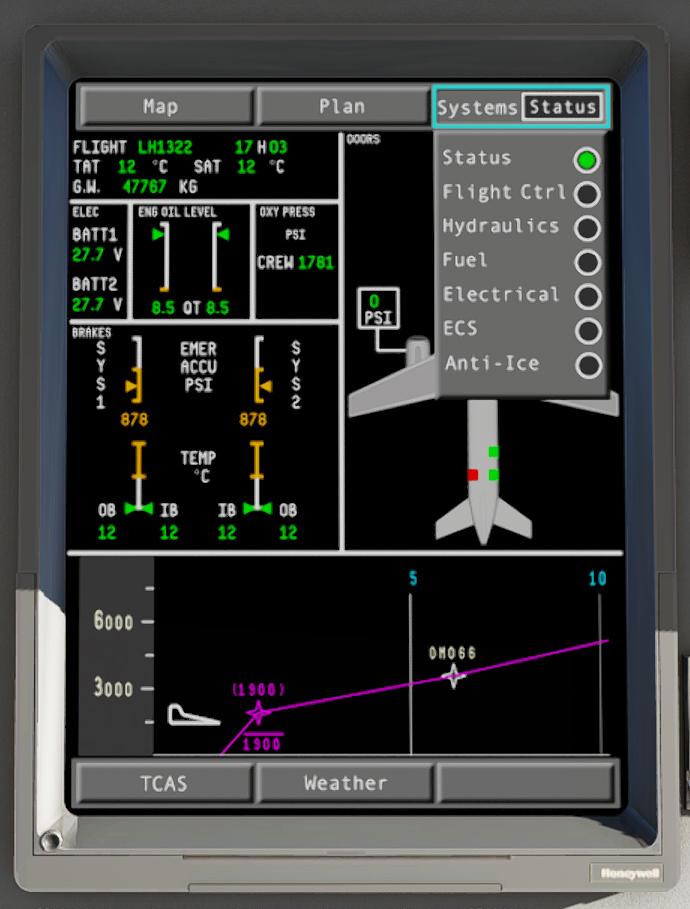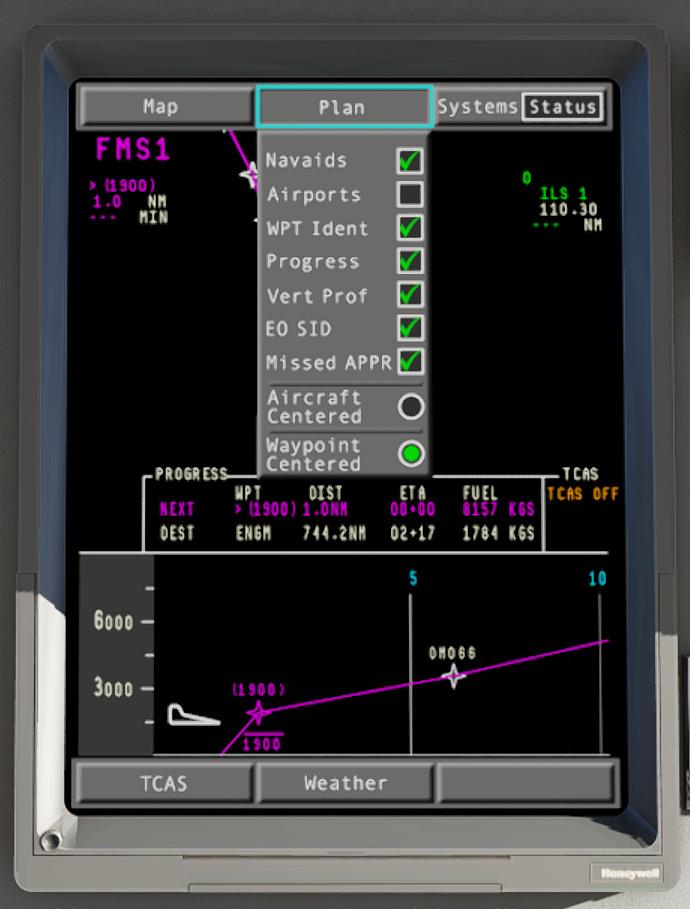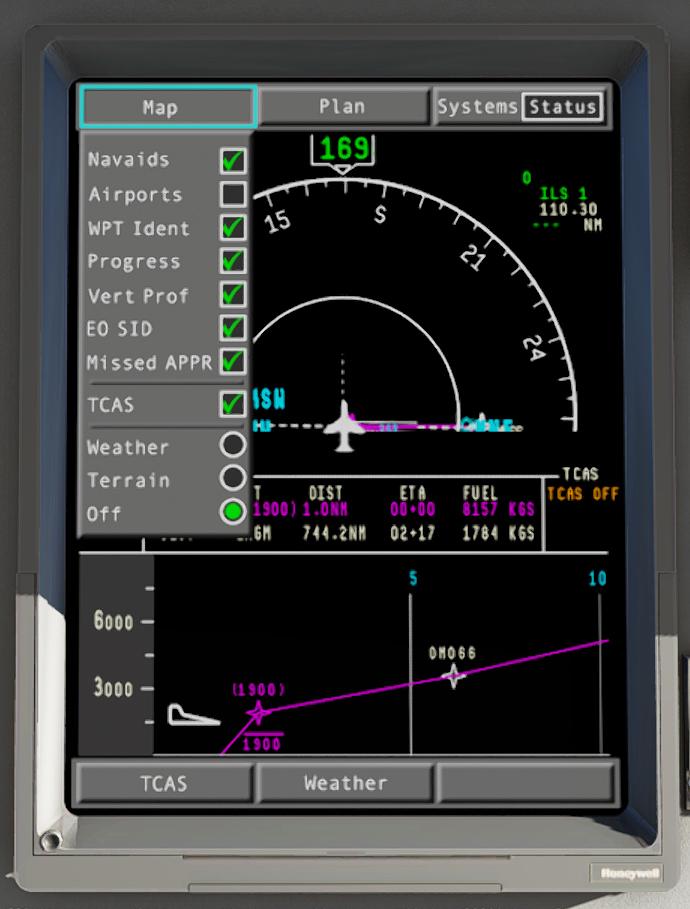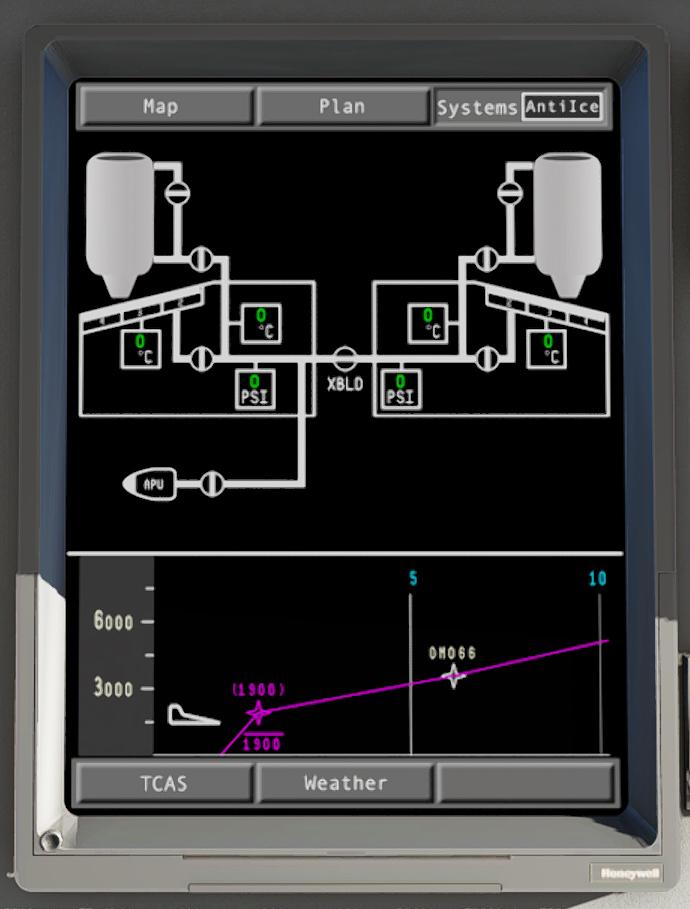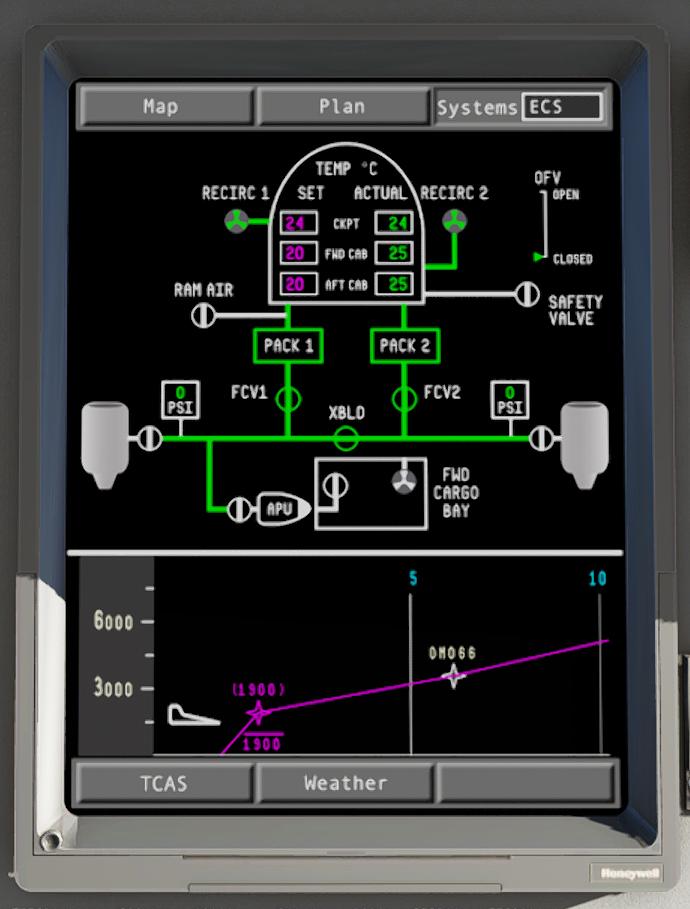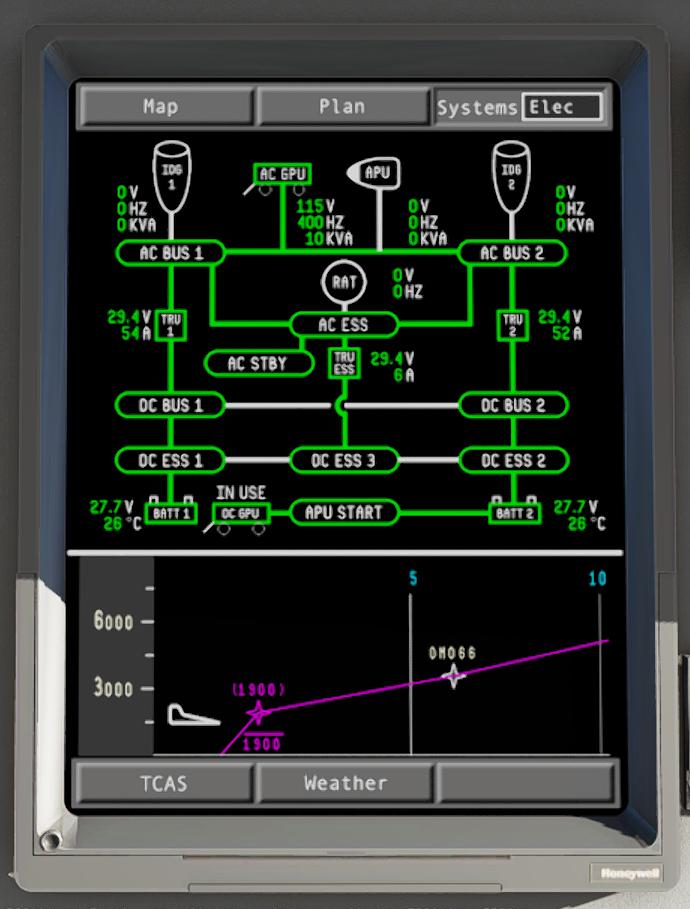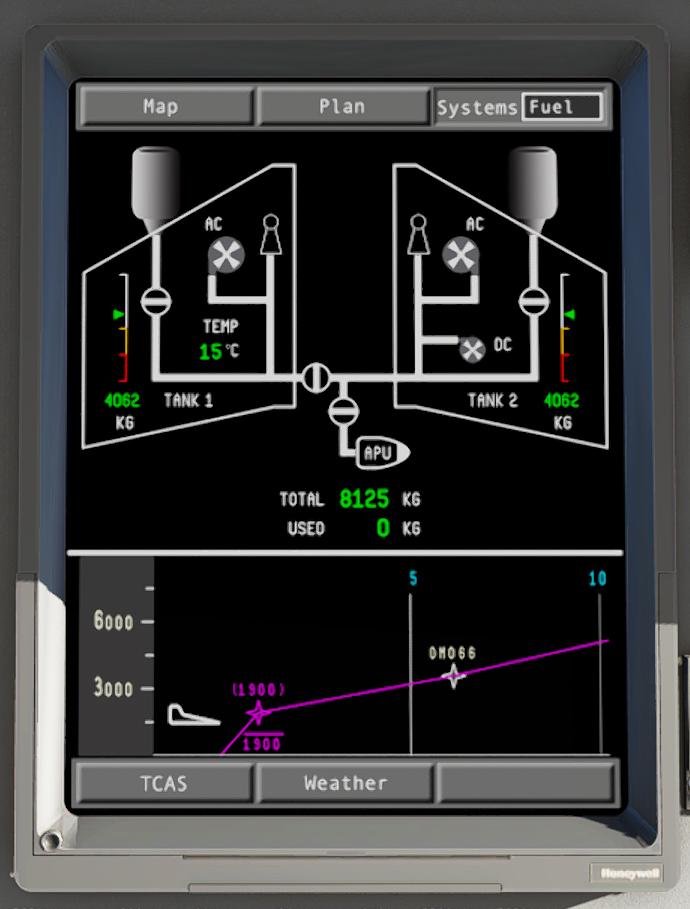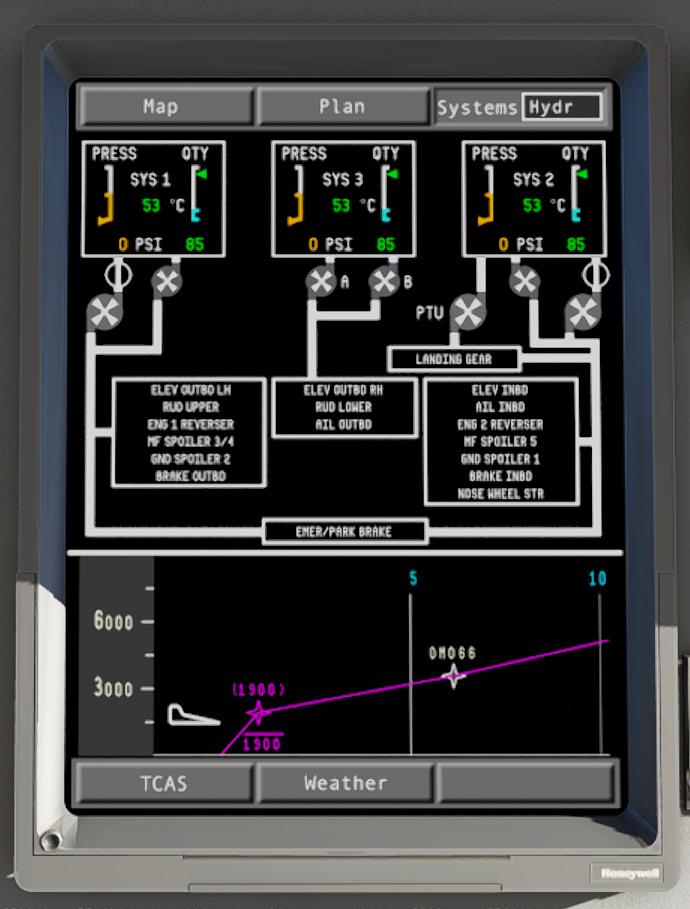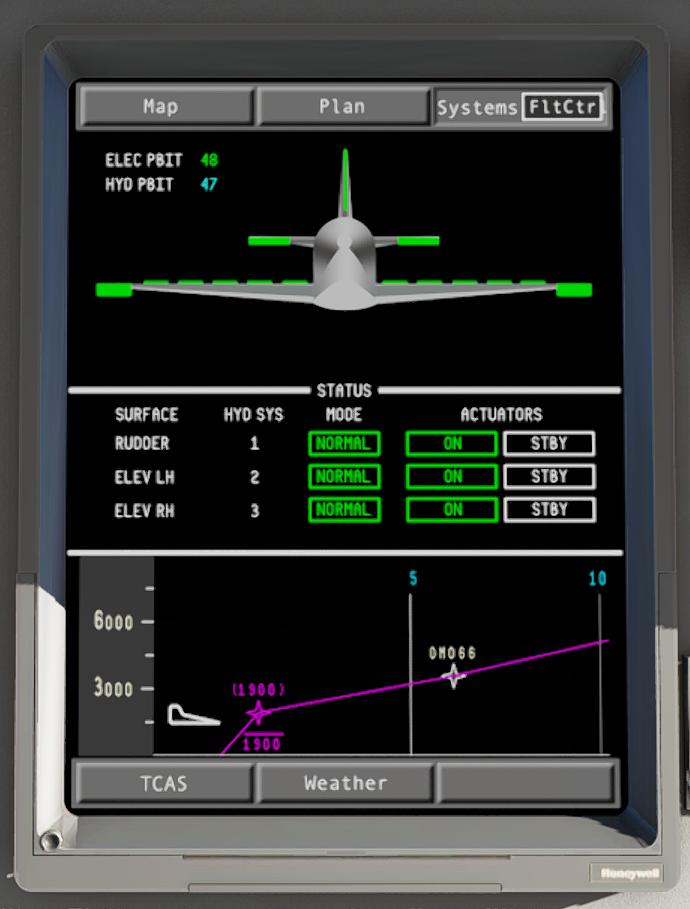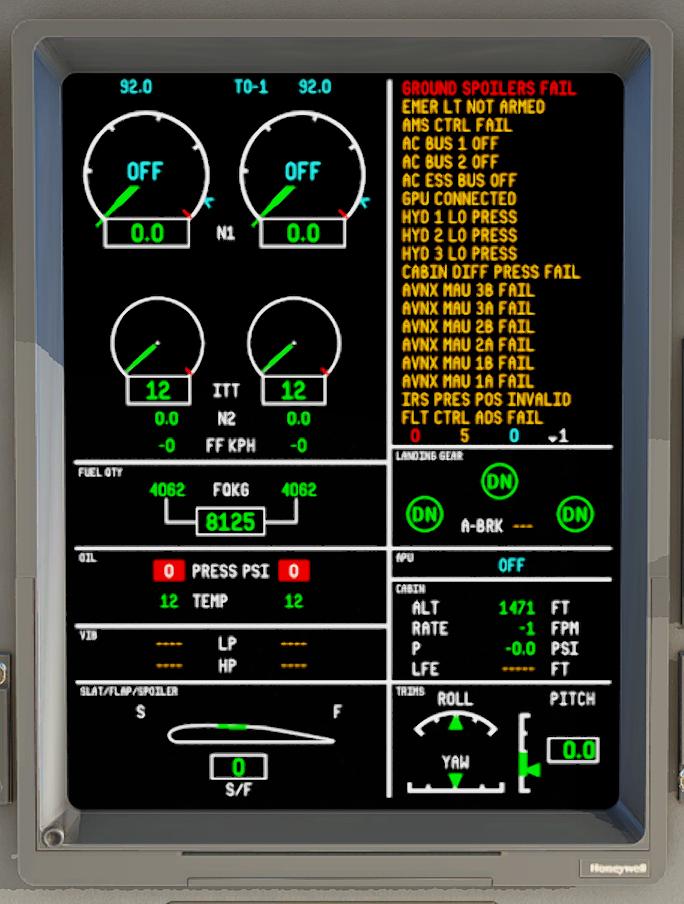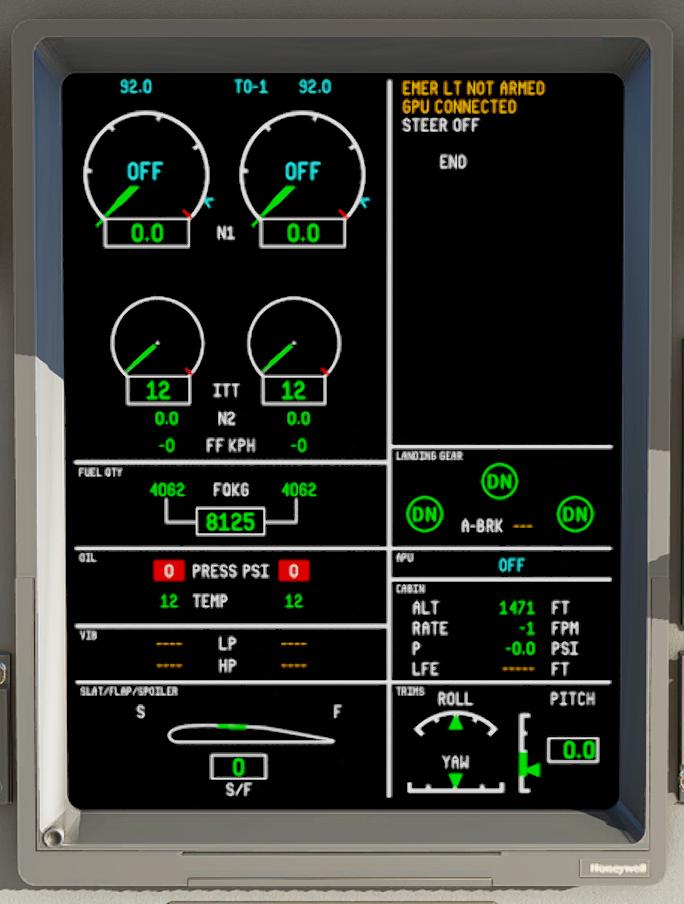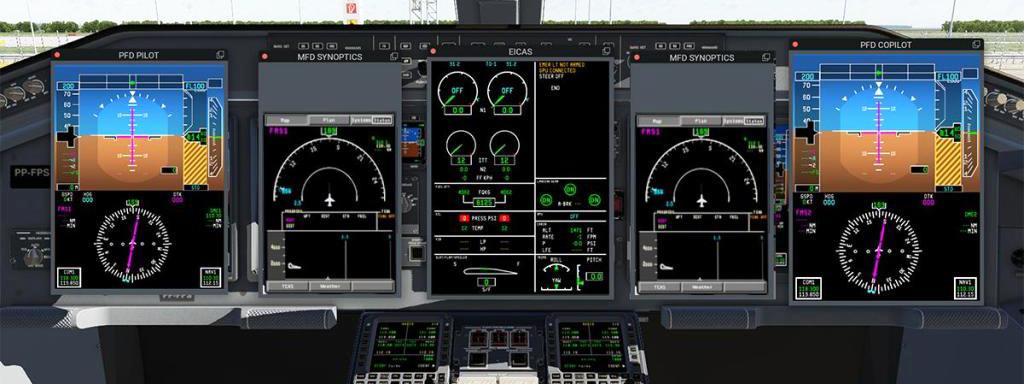Leaderboard
Popular Content
Showing content with the highest reputation on 04/24/24 in all areas
-
Aircraft Review : Embraer E-190 by Flight Procedures Simulation In July 2023, Flight Procedures Simulation released the Embraer E-195 for the X-Plane 12 Simulator. This aircraft although all new for X-Plane 12, also has a historical connection to the SSG Supercritical Simulations Group E-Jets version, but now called under another name in "Flight Procedures Simulation" (FPS), it is in many ways related to the same aircraft that was earlier released by SSG in X-Plane 11. SSG had released both the E195 and the E190 variants of the Embraer E-Jet, so as the E195 is already available, then the smaller E190 was expected to follow... here it is, and in many ways it is the same aircraft as the E195, but with a few new extra features added into the aircraft. Notable is that the same new features released in the E190, will also be cross-updated to the E195 if you own that aircraft. Actually the E190 variant is the pick of the E-Jet Series, E 170 - E 175 - E 190 - E 195. As it has the best of both worlds, it has a high passenger load (114 seats) as in being slightly shorter (36.25 m (118 ft 11 in), but also comes with a longer range in 2,450 nmi (4,537 km; 2,820 mi) and being able to fly an extra 150 nm than the E195 (124 Seats). The E195 feels long, even tube like, but the E190 is the more better and proportioned aircraft. One of the highlights of the E-195 by FPS, was the very good value price to features and quality, in being set in the mid-$50 price range. In other words you get a lot of quality aircraft for your money. The SSG/FPS also had great value to the featured systems provided, even right back to the early days, then there was a authentic FMS (Flight Management System) as part of the price... most deliver the same now, but that is just to highlight the point of the early advanced features from SSG that other developers didn't provide. The FPS E-190 is obviously almost identical to the earlier E-195, just a little shorter airframe. Both aircraft have been totally revised for X-plane 12. It shows in the quality of the modeling and detailing, that X-Plane 12 "shine" or aura is very evident. Same nice tinted glass and reflections.... the detail is nice, landing light surrounds and lovely flared winglets are also well carved and designed. All wings have the more variable Wing Flex animation for more realism. One area I thought on the E-195 that was clunky, were the internal mechanisms for the leading edge, still the same here sadly, so I disappointed it wasn't attended to... it's just feels a generation behind the current formula of detail in these current intricate leading edge, flap and airbrake combos... as which it is from the earlier SSG E-Jet Series. Undercarriage is very well conceived with highly detailed strut body and pistons, all hydraulic lines are well detailed, as are the scissors.... The side strut, although well done, is still left hanging in the wheel bay with no upper connection, as again on the E-195... this connection should have certainly been fixed by now (on both aircraft)... worse it is so highly visible from many visual angles, certainly on the approach/landing. Engines are the GE CF34-10E with 20,000 lbf (89 kN) thrust, compared to the 8E on the lower E-170/175 Series with only 14,200 lbf (63 kN), both engines are equipped with full authority digital engine control (FADEC). Engine pod detail is again excellent, great intake and the exhaust detailing is very well done. External features include all opening doors, Passenger left forward and aft, right Forward Service door, two Baggage holds and rear Service door. There is a nice GPU (Ground Power Unit) and you have wheel chocks on all wheels. Internal Cabin The E-Jet cabin for X-Plane 12 (E-195) was totally redone, or modernised. It's the same cabin here in the E-190, but it is a nice cabin with some really nice detailing. Seats are modern, as is the upper luggage bins are all also the new style with working Seatbelt/No Smoking signs and lit EXIT signs. Only niggle again are the differently set window shades from open to closed, still something I don't like?... same also is you have these excellent seat-back screens with the Airline logo, a highlight is that the seat colours/logo can also change with different liveries. Front and rear galleys are well done, but not overly meticulously detailed, a bonus for framerate. Cockpit In the cockpit, you could be in the E-195... It's exactly the same, great for your type rating! Both pilot chairs were all new on the E-195, they came with better sheepskin covers and hard-back rears, sadly the armrests are still fixed. (another area I thought would be updated for the E-190). The rear bulkhead was also completely different, and so is the entrance/door, and a modeled (non-working) jump seat on the bulkhead. Overall all the cockpit fixtures and textures have been totally redone with the same colour. Note the nice stitching, and netting rear on the pilot seats. EFB Tablet The Tablet EFB (Electronic Flight Bag) is also the same as the one in the E-195. One tablet each side for the Captain and First Officer and both are not changed in their detail. The Tablet menu screen on the left side is a huge step forward and it is easy to use. When turned off you can then use it as an AviTab, via the button top right of the screen. (plugin required) The Tablets can be added or removed on both the pilot's and the First Officer right side, but you have to select (On/Off) EFB or AviTab from only the left side tablet, but once the mode is selected it works on both as the tablets mirror each other. There are ten icon options across the top of the tablet... The first three options cover the GPU, Chocks and Cabin Lighting selections. The Circular arrows icon is the INIT page that has three options; "Unpowered Cold & Dark", "Powered at the Gate" and "Unpowered And Parked". You select the flight state, then press the green button left to activate that state.... it works well. Fifth Icon is the External options page has two options... "Doors" and "Pushback". You can open and close all six doors noted, but only from here in the Tablet and not manually. The Pushback mode is a bit limited... There is only the option shown to pushback in reverse or forward, brakes have to be off to activate and there is a procedure to follow to turn. Sixth icon is the Payload page... here you can add in your Passenger, Cargo weights... It is a single entry (Payload) entered via the keys 1K/100/10 then you load the aircraft (or compute the load)... you can change from Kgs to Lbs in the lower centre icon. Seventh Icon is Fuel. Basically the same as the payload page, you enter your Block Fuel load, then on pressing Fuel/Defuel it will load/unload the aircraft, the page will also display your fuel trip prediction (but only when you have programmed the FMCU. Eighth icon is the Takeoff Speeds. Here you select the Takeoff mode, or derated power setting (T01/T02/T03) then flap position. It will insert the current (airport) outside Temperature º and the set Gross Weight, then compute the V Speeds, CofG (Centre of Gravity) and Trim position ready to insert into the MCDU Takeoff page. All three set up pages (Payload-Fuel-Takeoff Speeds) are extremely easy and fast to do, so setting up the aircraft isn't going to take ages if you just want to fly. Ninth icon is the Sound page. Seven sliders cover three areas of Engines, Flight Deck and Environment, with a Master slider right. Final and tenth icon is the Options page, divided into "View Options"; Hide Yoke Captain side, Hide Yoke First Officers side, Hide Outside Pilot Figures and Show F.O. Side Tablet. "System" Options include; Link Baro Instrument Settings and Pause 10 NM to TD, again the Weights from KG to Lbs can also be changed here. Obviously the Tablet is a huge change from the fiddly X-Plane 11 window idea, far better for access and for setting up the aircraft... it is simple but also well done to use and mirrors the E-195 tablet as well. Systems Power on via the Battery power and the systems show the "Backup Mode". Only when you add in the direct power (GPU/APU/Engines) that you get the fully loaded system. Most of the Systems are a carbon-copy of the E-195 instrument layout and functionality, so a lot is repeated here as described in the E-195 Review. The Embraer E-Jets systems use the Honeywell Primus "Epic", Electronic Flight Instrument System (EFIS) glass cockpit. It is very nicely done, the system CAS (Crew Alert System) messages, Aural warnings, Takeoff configuration warning, Stall protection system, Windshear detection and escape guidance, Non-normal operations are all represented. The SSG/PFP E-Jet basic systems has evolved over many years, improved and is now quite substantial, I was very impressed by the CAS warnings and alerts. Five displays across, with outer main displays PFD (Primary Flight Display), MFD (Multi-Functional Display) and in the middle EICAS (Engine Indicating and Crew Alerting System), they all pop-out via the left corner screw, are scalable, also home cockpit ready. The PFD displays information such as airspeed indicator, altitude indicator, ADI, HSI, vertical speed indicator, radio aids, autopilot, flight director and radio altitude data. In the event of a display failure, information will be automatically presented in the MFD. The display controller portion of the guidance panel allows the selection of PFD HSI formats, navigation sources, weather display, and bearing pointer selection. The MFD presents map and plan navigation formats and various systems synoptic formats that are all selectable. The MFD provides redundancy to display both the PFD and EICAS formats based upon reversion. It also has the ability to display maintenance information. The MFD consists of menu softkeys, on the top and bottom of the screen, which are used to select formats and to control the various systems. Note the lower screen "Vertical Profile Display", SSG was one of the first to include the feature on their aircraft, and it is very good here. There are three option menus; Map, Plan and Systems... And six system displays; Status, Flight Ctrl (Controls), Hydraulics, Fuel, Electrical, ECS and Anti-Ice. The EICAS displays engine and system parameters such as flap, gear, spoilers and trim positions, total fuel quantity, APU and environmental information. The EICAS also displays warning, caution, advisory, and status messages. In case of failure in the EICAS display, its information may be presented in the MFD by appropriately setting the reversionary panel. An automatic mode de-clutters the EICAS after takeoff. De cluttering occurs 30 seconds after landing gear and flap/slat retraction. The Advanced Advisory System CAS logic has more than 100 messages in logic, comprehensive, and I love the block alert system flashing it is very visually authentic. Multifunction Control Display Unit (MCDU) The FPS E-190 uses the same FJCC UFMC by Javier Cortes, again the same as installed in the E-195. Also refined over the years, it is pretty solid now. Based on the EPIC Load 27 FMS it is easy to use and has also quite a lot of functionality built in... both left and right UFMC units are individual and can be used separately by both pilots. The MCDU allows FMS control, radio tuning, PFD radio tuning display setup, manual engine rating selection, engine takeoff data set and avionics display setup and test. There is also a UFMC pop-up, activated by the F8 key, there is no pop-up for the right hand display. If you haven't used the FJCC FMS before, then you have to install the UFMC data (folder). This is stored in the X-Plane12/Custom Data folder... FPS supplies a full AIRAC-2303 set of data, in the "Documentation" folder, and the full contents are all to be put in the said Custom Data folder... notable is that if you use Navigaph or Aerosoft data, then a separate update link is required to this folder to update the monthly AIRAC. Note- If you already have the UFMC installed and updated to the current AIRAC, then there is no need to do this step. Also notable is that the Flightplans for the E-190 are stored here as well, again if you use the Simbrief Downloader, an address link is required to direct the file to the right flightplan folder. The Flightplans also use a unique .ufmc lauguage, so you have to specific with the flightplan. The colourful FMS Flightplan requires THE full insert of TAKEOFF REFERENCE DATA (3 pages). There is a reason for filling in the FMC data to the full extent as we shall see later, and it requires every i dotted and T crossed. PERFORMANCE PLAN pages (5) show fuel predictions for each waypoint, CLIMB/CRUISE/DESENT/LANDING pages show full flight performance and detail, including vRef landing speeds... PROG (Progress) page is highly detailed as well. The flight system provides Full TOGA/VNAV/LNAV/RNAV/LOC/GS/Missed APPR functions. SPEEDS with CLIMB/CRZ/DESC come with a custom Autothrottle system. All speeds thoughout the flight phases can also be changed into the flight plan and on the performance pages. Overhead OHP is the same/identical to the E-195, so there is no need to relearn anything... X-Plane 12 brings a different feel into the cockpit, provides more feel and depth to the controls and instruments... Centre console was also retextured, and still you have those lovely ceramic throttle levers, you can feel them, the smoothness of the surface, and the Auto-Throttle disconnect is built in... works as well. The lovely Ram Horn yokes are also still perfectly nice. They come with built in (working) Trim switches and a working PTT button. Lighting First lighting impressions are excellent. You have a lot of adjustment via five knobs at each end of the glareshield, and three (MAIN PNL/OVHD PNL/PEDESTAL) knobs on the OHP, plus the standard DOME switch. DOME lighting is very effective via two (bright) lights in the roof rear. Each pilot also get a MAP light which is also very good... ... so you can also tone everything down to just the instruments, or just to find a little down-light to see the console switch gear, perfect for night landings or takeoff phases... its all very good, and have a very nice place to fly in at night as well. If you remember the E195 cabin lighting was a bit unfinished, as in being only half way completed... In the E190 it is done, but the light spreads don't match up to the light source on the fixed rear zone? A shame as it looks great. You switch on the cabin lighting via the button on the Tablet, off and you get only the floor light strips. More so is that both galleys are connected to the cabin lighting, so all ON or OFF, they should be separated for better illumination. Another small annoyance is the red beacon still flashes in the cabin like on the E-195? Externally it is very good. All lighting is the X-Plane 12 lighting, so it is more XP12 LED in feel... notable is that the lighting will be updated in the next X-Plane 12.1.0. release by Laminar Research, so what is seen here could be even more refined. Navigation, Strobes and beacons all look good, as does the Tail lighting. There are runway turnoff lights, three landing lights that covers both wing and nosewheel positions. There are very effective Wing/Ice lights (here noted as "Inspection", which are great for cabin views at night. Flying the Flight Procedures Simulation E-190 Yes we are in Brazil... this flight is from SBGL (Galeao-Antonio Carlos Jobim In, Rio) to SBSV (Dep L E Magalhaes Intl, Salvador). Starting the E-Jet 190 is Simple Simon, no bleeds to worry about here, as the start is fully AUTO, once you have turned or selected each engine switch. Then watch the ITT (N2) kick off and start the start procedure, which is very long here and takes around a minute per engine, as you hear all the separate processes come in and the fans starting to twirl, its all very, very good and very authentic in realism, as you see the full authority digital engine control (FADEC) in operation. Startup sounds are excellent, thankfully with those engines sounds with their many startup stages that are recorded from real GE CF34-10E engines. That explains the perfect if long start up procedure, as they are timed into the soundtrack of the real thing, and it is very good aurally to listen into the full startup experience. The adjustment of the sounds is excellent as well with the great sound control (tablet) to get the right external, internal feel. The "Pushback" system is a little tricky until you work it out, devilish simple when you do... Release the brakes activates the Pushback mode, then press the pushback option... the tricky part is having the tiller selection up, to steer the aircraft yaw (Joystick), if not you can't steer. Select to Pushback in reverse, or when you are ready to pull forward, then use the other arrow... centre selection is STOP. Just using the park-brake will disable the pushback... you will soon get to like it. Betterpushback is however not an option here as the plugin does not work with this built in system, and thankfully the old silly stick pushback on the X-Plane 11 version is gone, of which I really didn't like at all. Note that to switch the Tiller back to normal to steer with the Yaw. On the E-195 I wasn't very happy with the touchy yaw steering (joystick), so I adjusted the yaw sensitivity way down to give me more leverage on my yaw axis. Here I found I had more rudder travel in the steering, so I didn't adjust the sensitivity this time around, but you do use a lot of rudder movement in the fine tuning of the centring, but now more evenly than using the sharper joystick (yaw). So what is new compared to the E-195 on the E-190? Well the E-190 has a completely new LNAV/VNAV alghoritm, that is different from the earlier version. So the note made earlier on making sure the FMS input data is completely done and correct is important, as the E-190 will follow this data absolutely, certainly the VNAV profiles that are all shown in the "Vertical Profile Display". Also new to the E-190 are the RNP departures (Required Navigation Performance). RNP is a family of navigation specifications under Performance Based Navigation (PBN) which permit the operation of aircraft along a precise flight path with a high level of accuracy and the ability to determine aircraft position with both accuracy and integrity. It is well worth studying the differences between RNP and RNAV procedures. Before you start the takeoff roll... you set the LNAV and VNAV modes ready. Power up and put the throttles to the full (takeoff) position, now once moving and the PFD will show the system is active... ... it doesn't matter into regulating the thrust power, for as one you have set that in the FMCU, and so two, the FADEC system will keep the engine thrust within the limits or 92.0% (TO.1). The CF-34 wail is nicely heard in the cockpit, a totally different sound as it is in the cabin, but highly realistic, and all sounds are doppler and 3D. There is a full "Custom Fly By Wire" system that provides flight protection limiting and control laws according with the FMS Protection System logic, again all very Airbus. The flight model performance has also been revised from the E-195 to the E-190, and yes it handles even far better and it feels now very good. I found the E-190 more refined, certainly from the earlier E-195 climb, and this time with no engine surging... "Thank you very much, I will take that one". Once in the "Positive Climb", now select the AP (Autopilot) and both the LNAV and VNAV modes become active... note the VNAV now goes into the FLCH (Flight Level Change) mode and then chases to your VNAV set altitude. (LNAV will follow the Flightplan route) Even if you break the profile and level out at say 15,000ft. Just reclick the VNAV button for the aircraft to resume the profile. When in the VNAV mode. The ALT (Altitude) will change from green to magenta, not only will the aircraft follow the vertical profile, but it will also select the Flightplan set speed (m.65) and adjust were required, like say TOC (Top of Climb). But you have to be aware of the Airspeed - Mach switchover point. You need to check the fightplan of the point it changes over from IAS to Mach, and to physically do the switch, or the VNAV speed gets confused on the wrong setting, same going back from Mach to IAS. Note the excellent rate of turn indicator when in the "Bank" mode. In X-Plane 12 the FPS E-190 looks amazing in the right lighting conditions, high in the FL330 cruise level, you are purring along, sounds are really good and authentic... the FPS E-190 looks excellent against the real time cloud formations. Max. speed / Ceiling Mach .82 @ 41,000 ft (12,000 m), Cruise Mach .78 (447 kn; 829 km/h)... It is also a very nice feel on the E-190 flightdeck, and the great thing about flying in the cruise, is that you can just stop sometimes, just look at the world around you. TOD (Top of Descent) and you watching the VNAV (PATH) to see if it will perform the action of going into the descent phase... it does, but I found you still have to control the speed, if not the steep descent will runaway with the speed as the descent vertical speed is steep at around 2600 fpm? The system will also alert you that you will also have to reset to the landing altitude (here 2,000ft), if not the system will recapture the altitude and not descend correctly... so you will need to do this altitude reset before reaching the TOD point. The initial descent angle I found a little too steep, but it levels off around the approach phase... I like a descent speed of around 2200 fpm, but here like noted it is around 2600 fpm, so the cause of the excessive speed. But like I mentioned in controlling that speed, certainly if you have the correct velocity in the final approach turns, it IS important, as you will then have better control in the approach phase... You can now use RNAV approaches (and their charts) with the FPS E-Jet Series, in so making for tighter arrival procedures. Autoland 1 and Autoland 2 and CAT I, CATII approaches are also now all available, but Autoland 2 is only active at FULL flap with the ILS APP selected. Great immersion on the final approach phase, a good simulation is when everything is working together, sound, instruments, control feedback... your in there! The E-190 has a very low final approach speed (Full Flap) of 120 knts, 115 is the absolute minimum, or below the stall speed. Disengage the Auto-Throttle at 500 ft and cruise into a slightly higher final flare. Spoilers activate automatically with pressure on the wheels, then retract again when the wheel speed is below 45 kts for at least 5 seconds. Reverser sounds are really excellent, as you can hear them roar from the cockpit, and they are very effective as well. Autobraking was set to "Low" as I like a lot of foot braking control in the final landing phase, this aspect also worked very well, with a nice braking feel. Note the great view from the cabin of the spoiler rear internal detail. Again rudder steering comes into action on the ground, don't touch the joystick yaw though... it is too touchy. And we are in Salvador. Liveries There are a couple of liveries from the older X-Plane 11 batch, namely the Alitaila and Air France HOP!, KLM and LOT (Polish). Missing again however is the nice Dolomiti. Some new ones provided as well, Azul, British Airways and Breeze all part of the download pack... more have also been added by FPS to the X-Plane.Org, these liveries include JAL, Lufthansa Regional, Alliance (Australia) and two Jet Blues __________________ Summary This E-190 is the follow up aircraft from Flight Procedures Simulation (ex SSG Supercritical Simulations Group) of their released the Embraer E-195 for the X-Plane 12 Simulator in June 2023. SSG released both the E-195 and the E-190, so this release is the shorter, but the more potent in the E-Jet Series of the E-190. The E-190 has a higher passenger load (114 seats) as in being slightly shorter (36.25 m (118 ft 11 in), but also comes with a longer range in 2,450 nmi (4,537 km; 2,820 mi) and being able to fly an extra 150 nm than the E195 (124 Seats). The E195 feels long, even tube like, but the E190 is the more better and proportioned aircraft. In most cases there is not much difference at all between the E-195 release and this E-190. The Systems and cockpit layout is exactly the same between both, so that is great for your cross type rating. Obviously the cabin is shorter with less seats, but the E-195 updated cabin and those lovely (logo) seat back screens are also moved over. The cabin lighting has also been fixed, well sort of. SSG provided one of the first and best E-Jet FMS systems, the same has had consistent updates over the years and is now very good and stable here. Notable is that study and a complete install of flight data is required for the use of the completely new LNAV/VNAV alghoritms behind the systems, it is again very good, but speed control is required on the descent. RNP departures and RNAV approaches are also now possible. Autoland 1 and Autoland 2 CAT I,CATII landings are also available. Externally the modeling was again updated from the SSG version to X-Plane 12, and the aircraft looks and feels very good in X-Plane. But a few areas like the leading edge tracks and gear support are dated or not connected, these niggles were still passed over to the E-190 from the E-195. The Tablet and it's features are very good in not being over complicated, and the in-built pushback tool is really very clever. The biggest benefit of these E-Jets in both the E-195 and this newer E-190 is the value price to the feature and quality ratio. You get a lot of aircraft for you money, and a great E-Jet as well with all the trimmings. If have purchased the E-195, you can also get the E-190 with US$10 off the price... so another saving there. So the Flight Procedures Simulation E-190 like the E-195 are both a great investment all round. __________________ Yes! - the Embraer E-190 X-Plane 12 by Flight Procedures Simulation is NOW available from the X-Plane.Org Store here : FPS Embraer E-190 Price is US$55.00 Requirements X-Plane 12 (not for XP11) Windows or Mac (not compatible with Linux) 8GB + VRAM Minimum Download Size: 626 MB Current version : 1.0 (April 20th 2024) Owners of the E195 by FPS can get the E190 for $10 off. Coupon can be found in the original E190 invoice Designed by Flight Procedures Simulation (ex SSG) Support forum for the FPS 190 Download The FPS E-190 is a 626.00MB download with an installation size of 2.34Gb, in your X-Plane Aircraft folder, this is an X-Plane 12 aircraft only. All updates are via the built-in Skunkcrafts Updater Notable for new users, is you have to install the FJCC FMS data in the Custom Data folder, install instructions are provided and so is a more up to date current 2303 AIRAC data pack. Documentation There is excellent full coverage documentation and installation details for the FPS E-190, including; AIRAC_2303_manual_install.zip Custom_Commands.txt FPS EMB 190_Checklist.txt FPS EMB 190 - Lights and Switches v1.0.pdf Installing the FPS EMB 190.pdf FPSEmbraer_190_Changelog.txt Installing the FPS EMB 190.pdf Normal_Procedures_EMB190.pdf _____________________ Review System Specifications: Windows - 12th Gen IS1700 Core i7 12700K 12 Core 3.60 GHz CPU - 64bit -32 Gb single 1067 Mhz DDR4 2133 - PNY GeForce RTX 3080 10GB XLR8 - Samsung 970 EVO+ 2TB SSD Software: - Windows 11 Pro - X-Plane Version 12.05r1 Plugins: JustFlight-Traffic (X-Plane.OrgStore) US$52.99 : Global SFD plugin US$30.00 : RK Apps XPRealistic v2 - US$34.99 Scenery or Aircraft - SBGL- Rio de Janeiro International v2 by Globallart (X-Plane.OrgStore) - US$29.95 - SBSV - Salvador/Bahia International Airport by Globallart (X-Plane.OrgStore) - US$19.95 Review by Stephen Dutton 24th April 2024 Copyright©2024: X-Plane Reviews (Disclaimer. All images and text in this review are the work and property of X-PlaneReviews, no sharing or copy of the content is allowed without consent from the author as per copyright conditions) All Rights Reserved1 point




